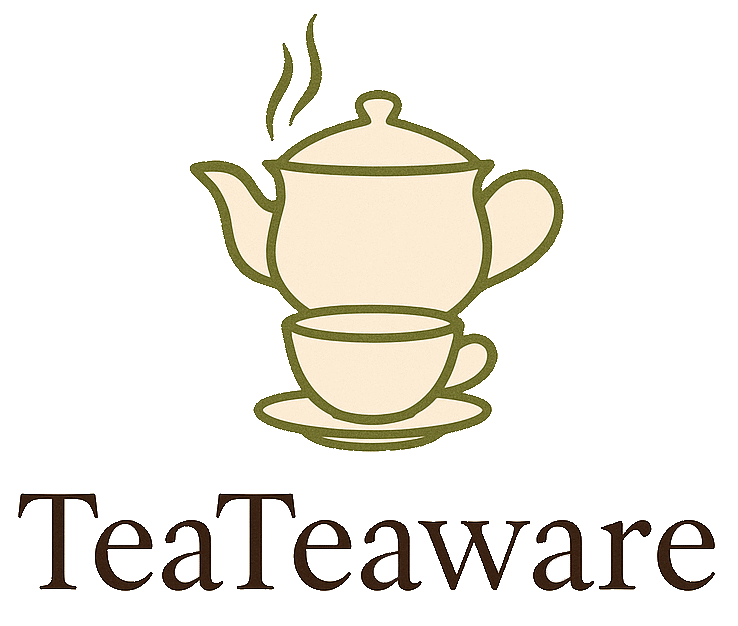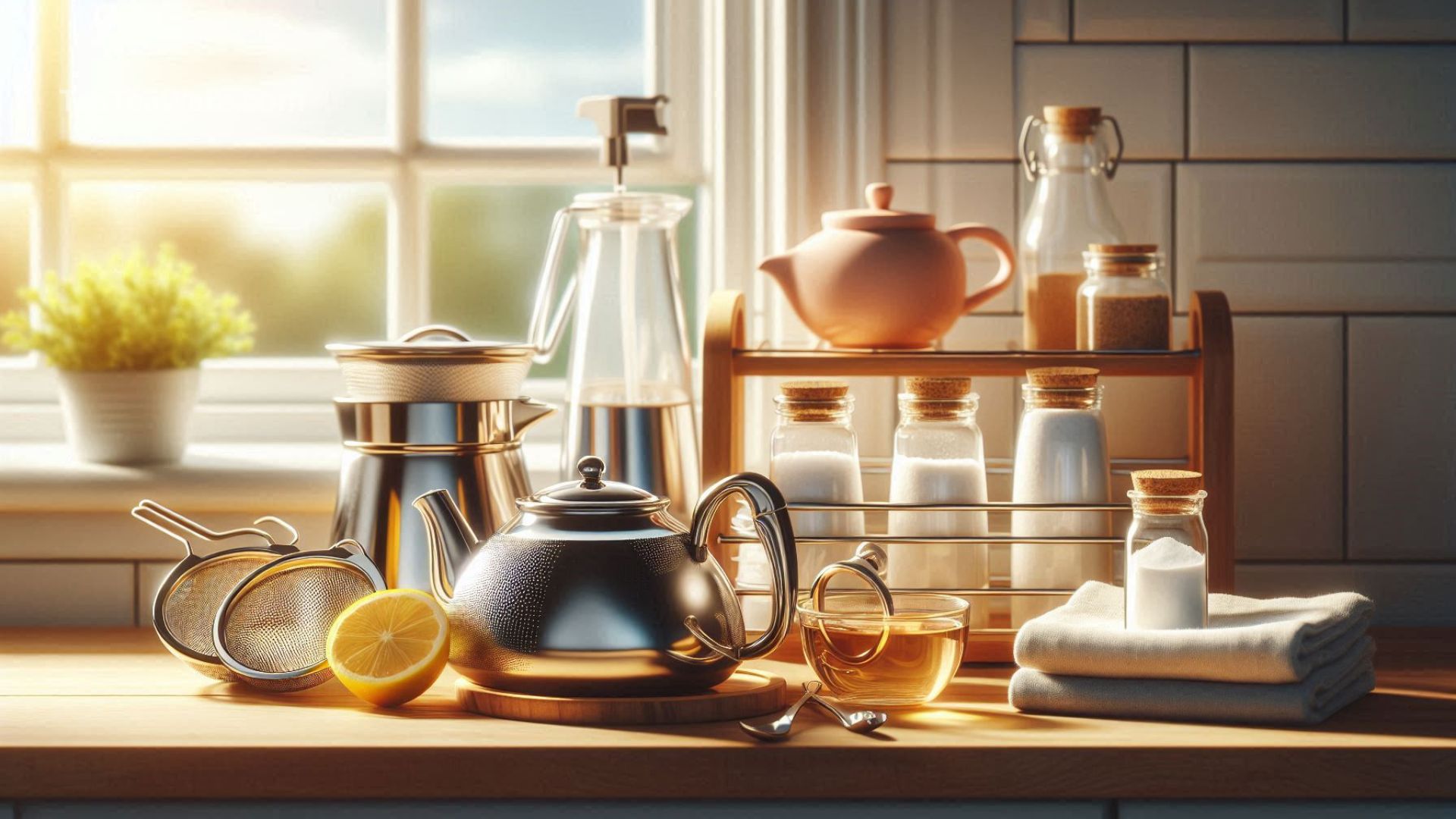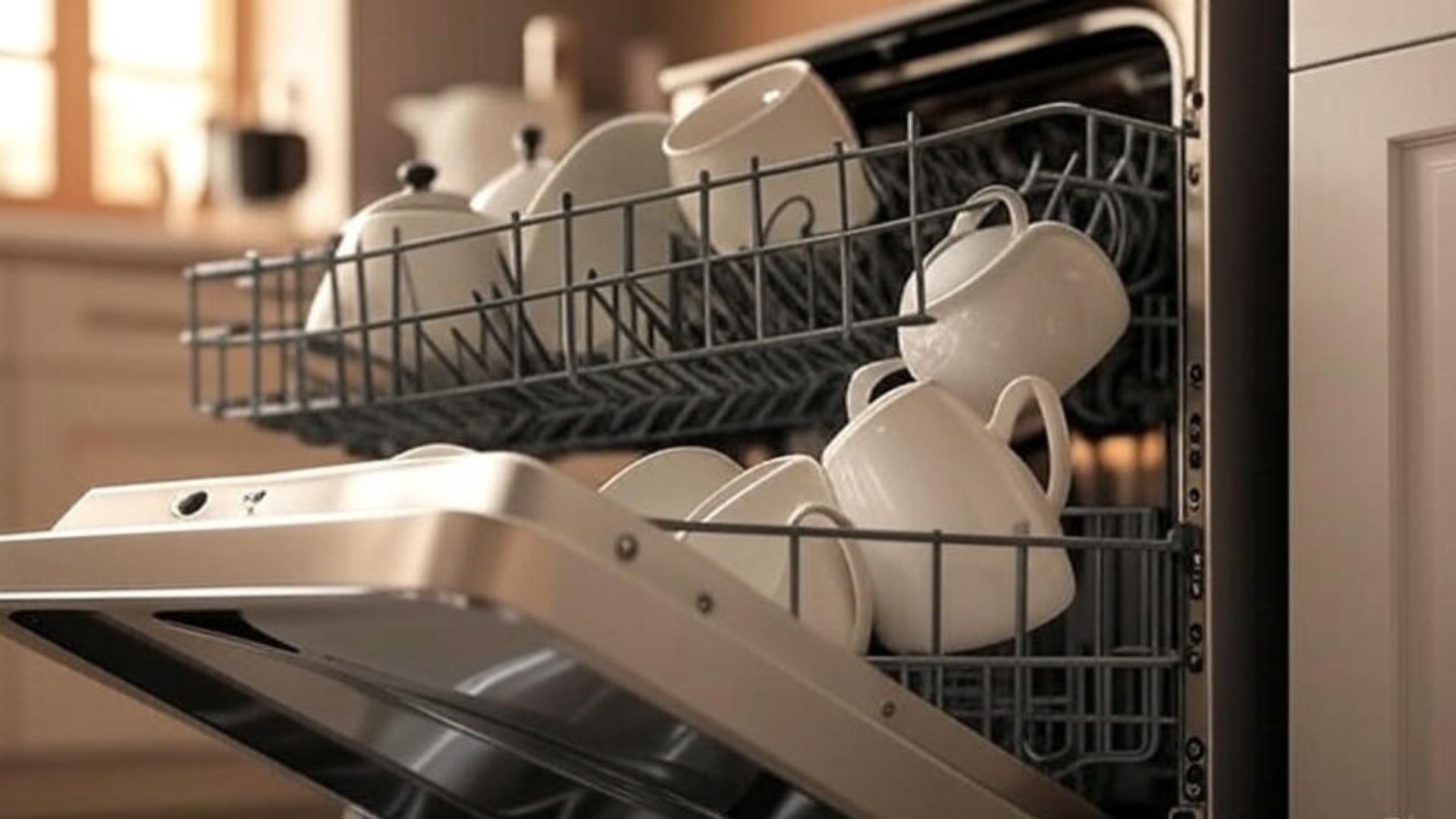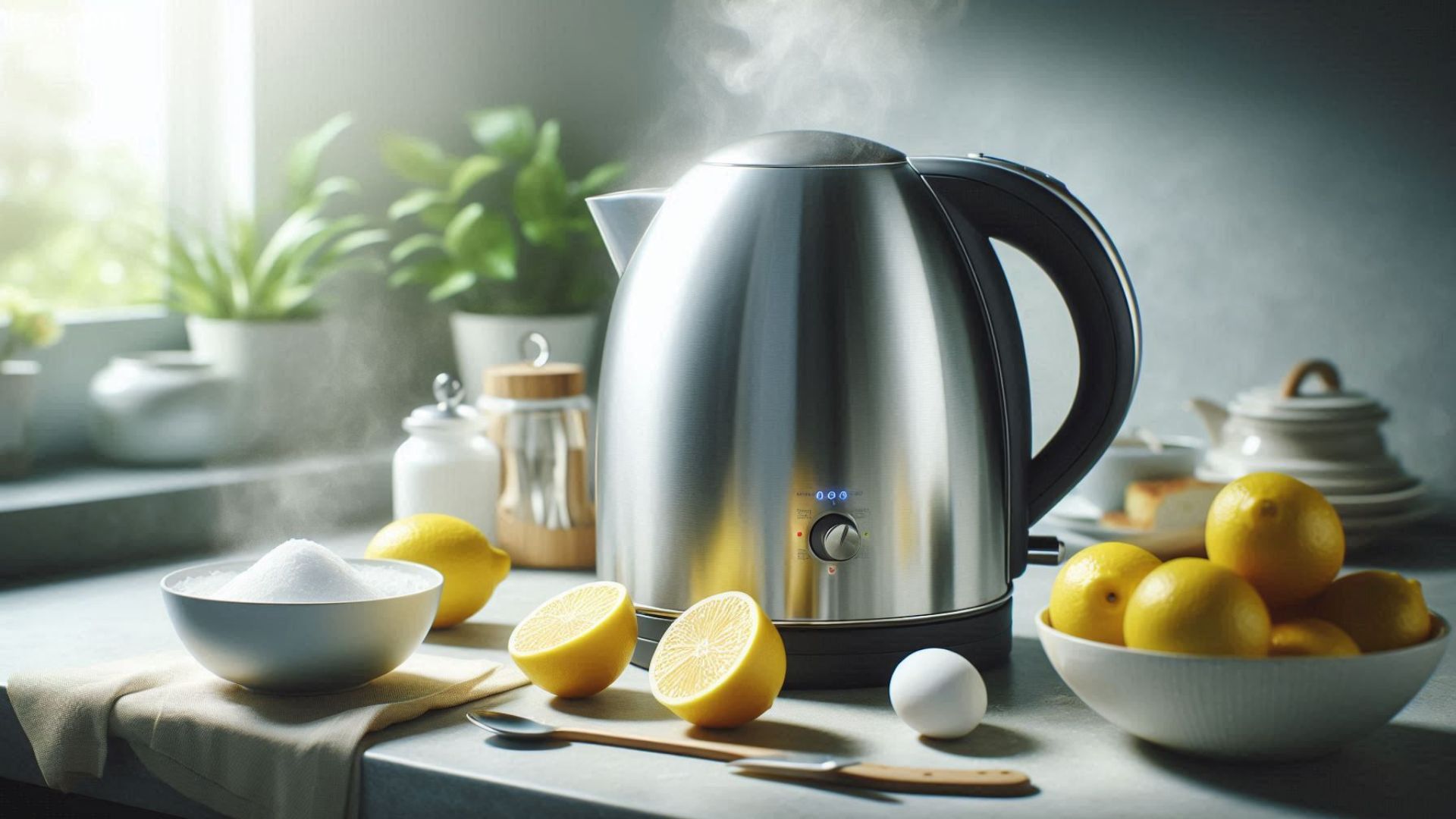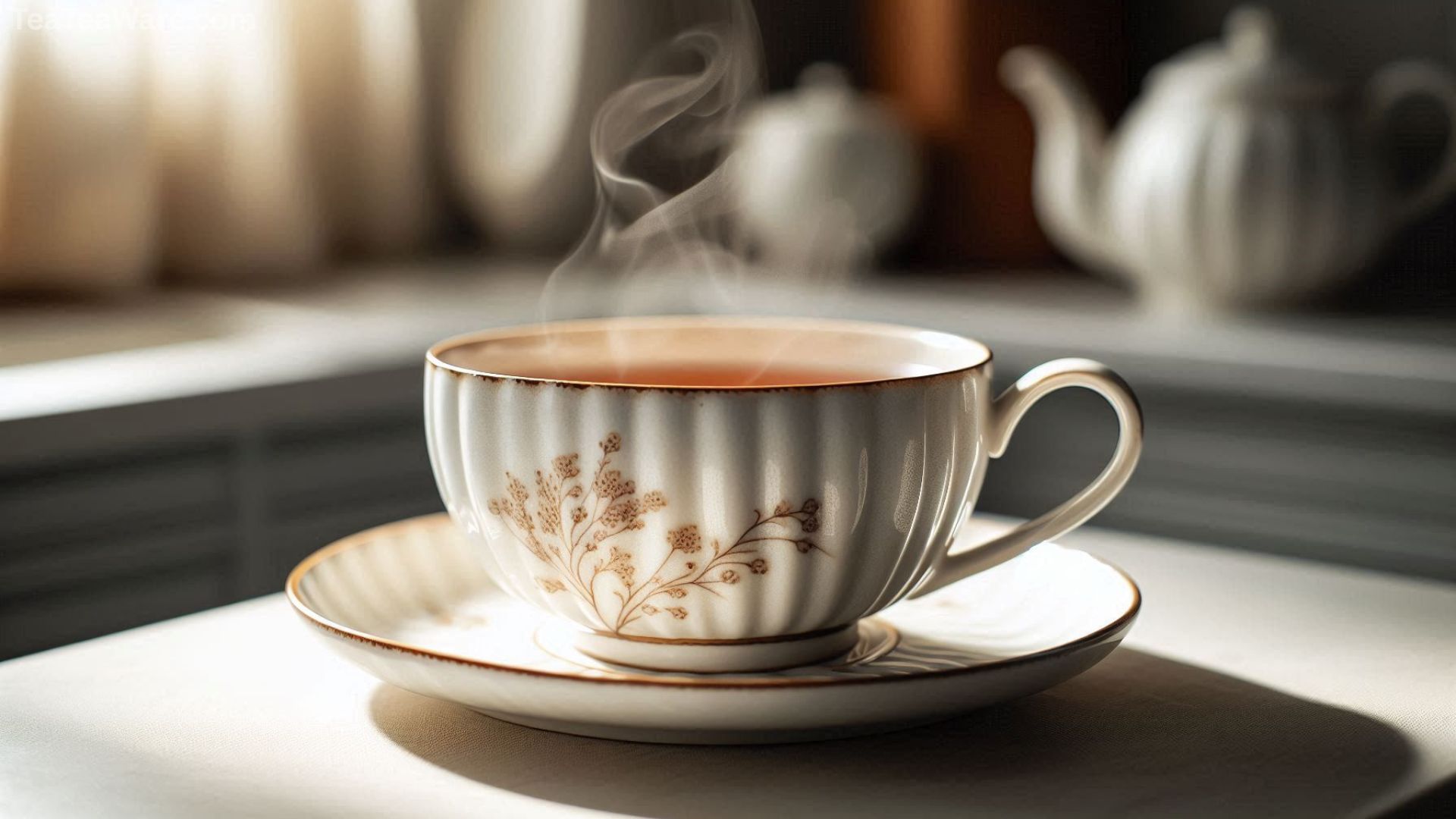There’s something truly magical about sipping a warm cup of tea—the soothing aroma, the comforting flavor, the quiet ritual of slowing down. But here’s a secret that many tea lovers overlook: your teaware matters just as much as the tea leaves themselves. Residual oils, stubborn tea stains, and mineral deposits can build up over time in your teapots, cups, kettles, and infusers, subtly altering the taste of your favorite brew.
Using natural cleaning products isn’t just about keeping your tea tasting fresh—it’s also about maintaining a healthier, chemical-free tea experience. In this guide, we’ll cover the best natural products for cleaning all types of teaware, step-by-step methods, expert tips, and even a case study to show just how transformative clean teaware can be.
Why Cleaning Your Teaware Matters
Even if you use the finest tea leaves, residue in your teaware can compromise the flavor and aroma. Common issues include:

- Brown tea stains forming inside cups and pots
- Oils from tea leaves accumulating over time
- Mineral deposits (limescale) from hard water
- Tiny leaves trapped in strainers or infusers
Neglecting these residues doesn’t just affect taste—it can also promote bacterial or mold growth. Clean teaware ensures that every cup is as fresh and aromatic as the tea was intended to be.
How to Clean Teapots and Cups
Whether your teaware is ceramic, porcelain, or glass, these natural methods are safe, effective, and chemical-free.
1. Rinse After Each Use
The simplest and most effective first step is to rinse your teapots and cups with warm water immediately after each use. This prevents stains from forming and keeps odors from lingering.
2. Baking Soda for Deep Cleaning
Baking soda is mildly abrasive, natural, and perfect for lifting stains without scratching delicate surfaces.
Steps:
- Mix 1 tablespoon of baking soda with warm water to create a paste.
- Gently scrub the stained areas with a soft sponge or cloth.
- Rinse thoroughly with warm water.
Tip: Baking soda also neutralizes odors, leaving your teaware smelling fresh.
3. Vinegar Soak for Tough Stains
White vinegar is excellent for stubborn stains and mineral deposits.
Steps:
- Mix 1 part white vinegar with 3 parts water.
- Pour the solution into your teapot or cup and let it soak for 1–2 hours.
- Rinse thoroughly and let air dry.
Tip: Vinegar restores shine to your teaware while being entirely natural.
Recommended Product: Bottle Bright – Clean Stainless Steel
For glass or stainless steel teapots and bottles, Bottle Bright’s all-natural, biodegradable tablets make deep cleaning effortless—no scrubbing required. Simply drop a tablet in water, let it fizz, and rinse.
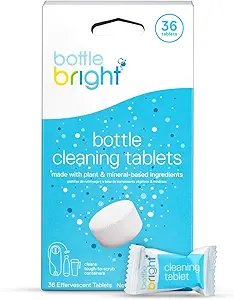
Bottle Bright – Clean Stainless Steel
These all-natural, biodegradable tablets are perfect for deep cleaning glass or stainless steel teaware — no scrubbing needed!
Also Read: How to Clean a Glass Teapot Without Scratching It
How to Clean Your Kettle
White spots inside your kettle? That’s limescale from minerals in water. Regular cleaning keeps your kettle functioning efficiently and prevents off-flavors in your tea.
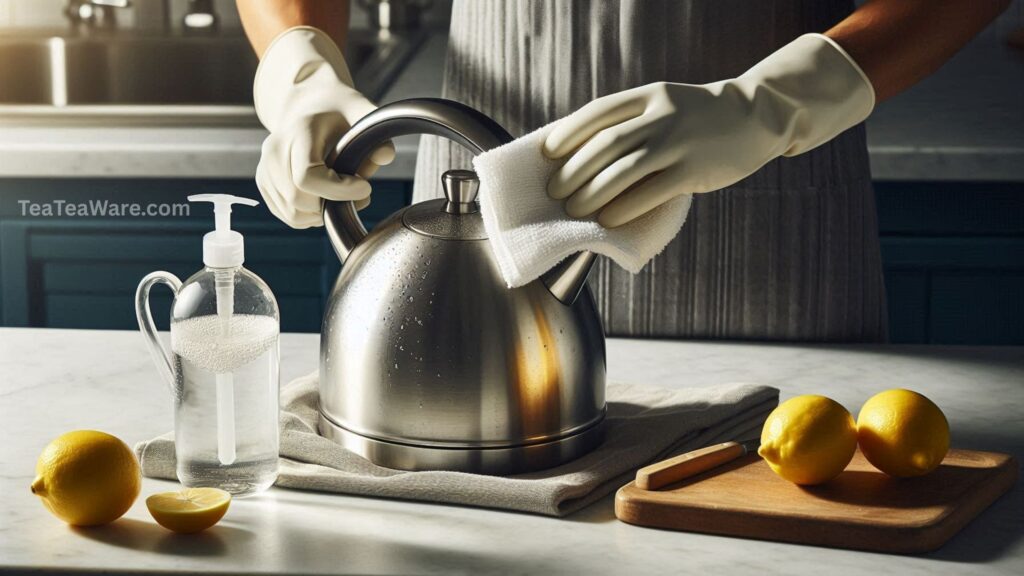
Natural Cleaning Method:
- Fill half the kettle with equal parts water and white vinegar.
- Bring to a boil, then let sit for 15–20 minutes.
- Pour out the solution and rinse thoroughly.
- Boil plain water once or twice to remove any vinegar residue.
Optional: Boil lemon slices for a fresh, citrusy scent. This method works safely for stainless steel and glass kettles.
Special Care for Specialty Teaware
Certain types of teaware require extra care:
- Cast Iron Teapots: Rinse with hot water only; dry immediately to prevent rust.
- Clay (Yixing) Teapots: Use water only—no soap—to preserve the natural seasoning.
- Glass Teapots: Avoid sudden temperature changes; handle gently to prevent cracks.
Recommended Product: Aunt Fannie’s Bundle
A plant-based vinegar solution safe for ceramic, porcelain, and glass teaware. Cuts through tea stains while remaining gentle on surfaces.
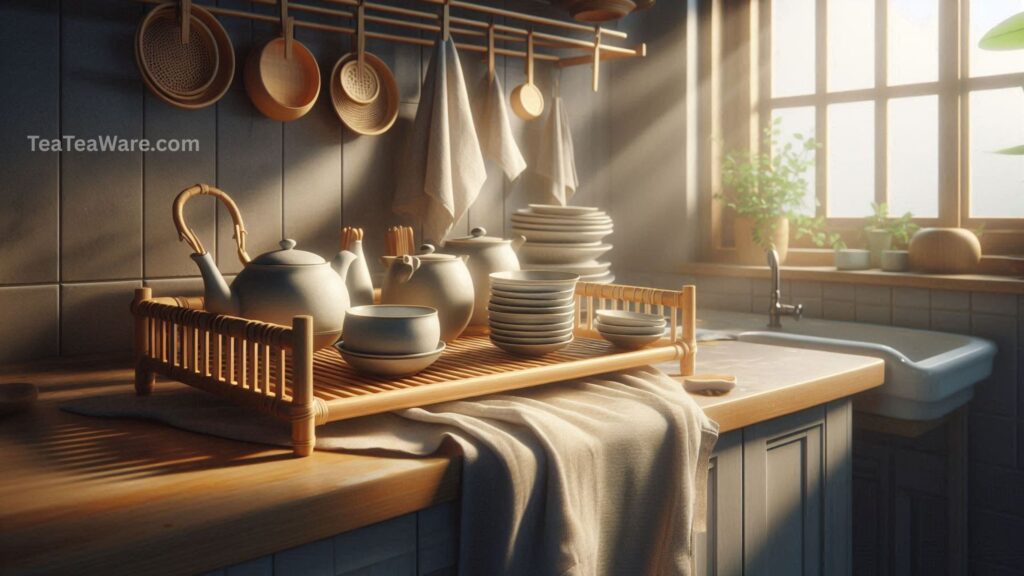
Additional Tips for Maintaining Clean Teaware
- Use filtered water to reduce limescale buildup.
- Rotate between a few sets of teaware to reduce wear and tear.
- Avoid harsh detergents that can leave chemical residues.
- Periodically deep-clean teapots and kettles, even if they appear clean.
Case Study: Tea Tasting at Home
Sarah, a tea enthusiast from Portland, noticed her green tea tasted bitter after a few weeks. After adopting a weekly cleaning routine using baking soda and vinegar, the delicate flavors returned, proving that clean teaware truly makes a difference.

Aunt Fannie’s Bundle
A plant-based vinegar solution safe for ceramic, porcelain, and glass teaware. Cuts through tea stains while being gentle on surfaces.
Also Read: Is Green Tea Good for Digestion? Best Brewing Methods
FAQs About Cleaning Teaware Naturally
Q1. Can I use lemon instead of vinegar for cleaning?
Yes! Lemon juice works similarly to vinegar, removing stains and adding a fresh scent.
Q2. How often should I deep clean my teapots?
Once every 1–2 weeks for regular use, or after brewing particularly strong teas.
Q3. Are natural cleaners safe for all teaware?
Most are, but avoid soap or acidic cleaners on unglazed clay pots and cast iron.
Q4. How do I remove stubborn tea stains from white cups?
Baking soda paste or a vinegar soak usually works. For extra tough stains, a mixture of vinegar and salt can help.
Q5. Can I clean electric kettles the same way?
Yes, just ensure no water enters the electrical components. Vinegar or lemon solutions are safe for the interior.
